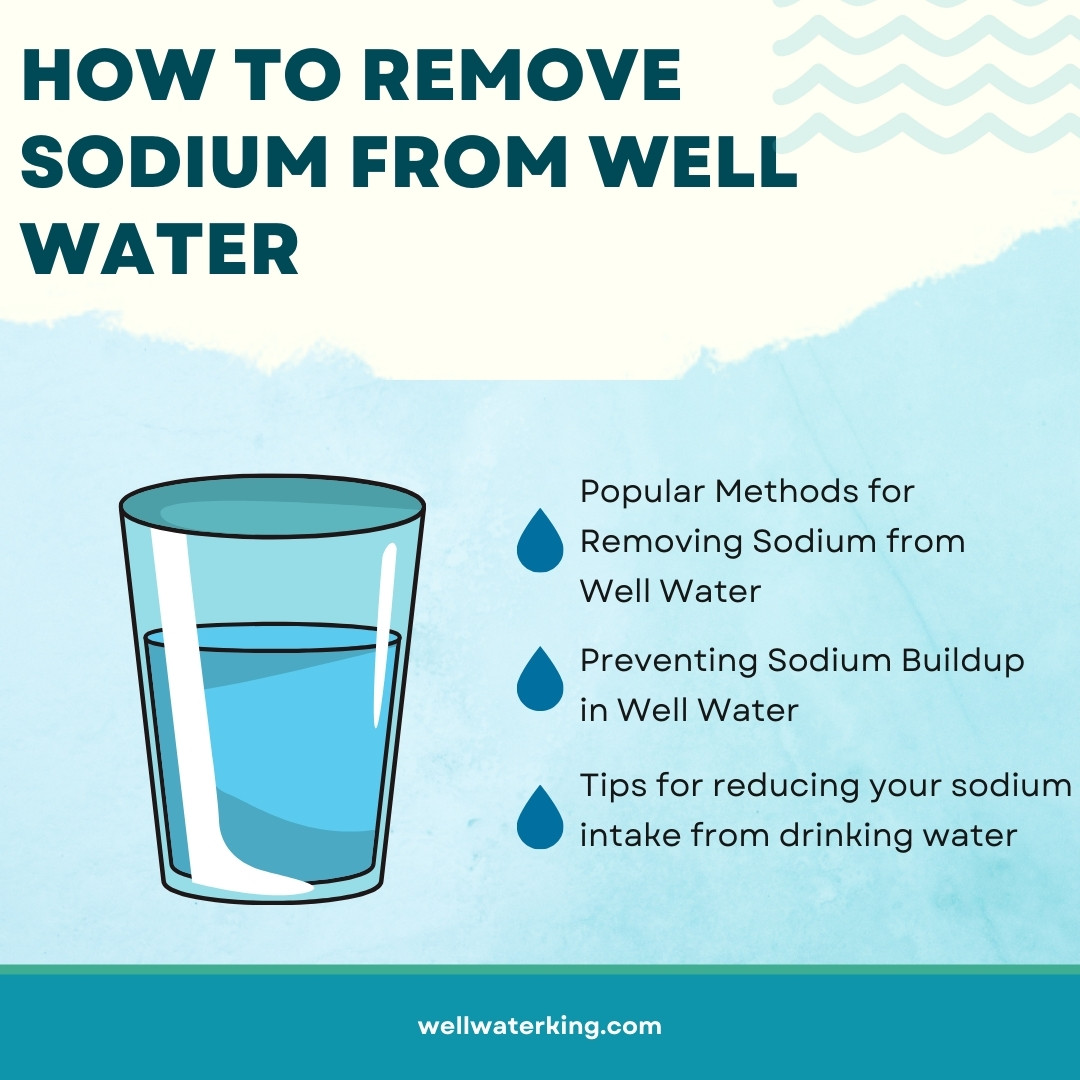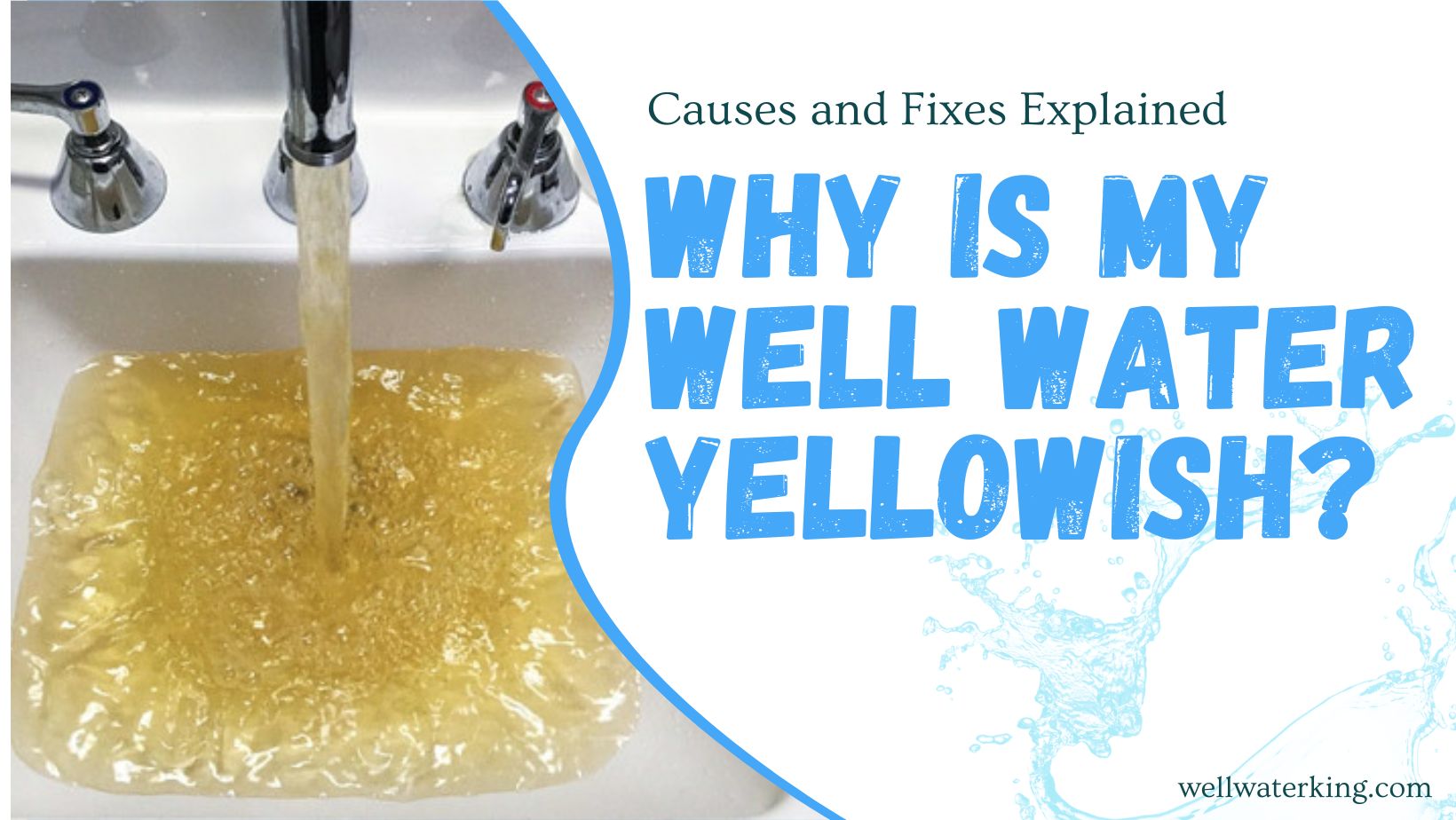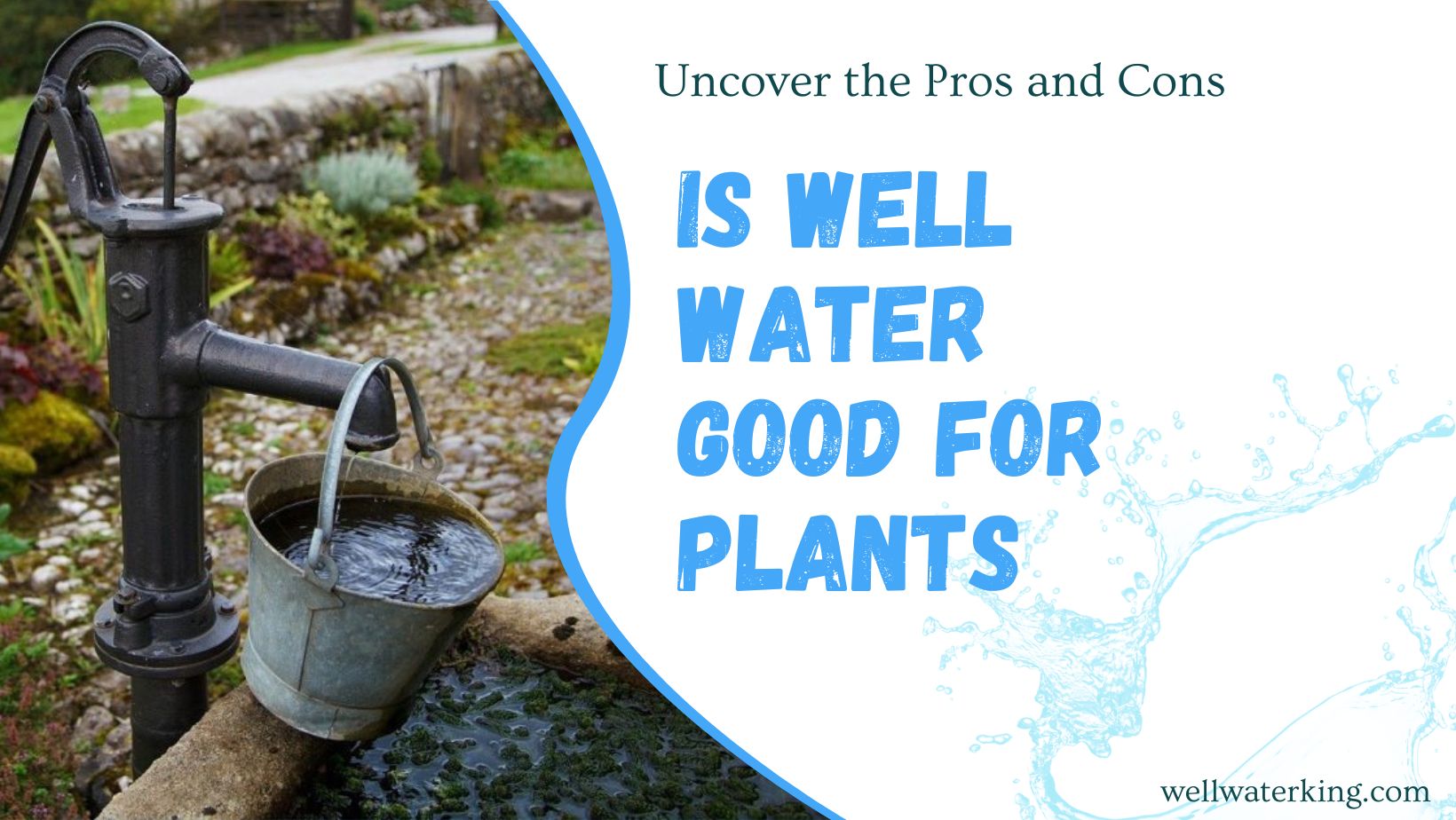You turn on your tap, fill your glass with water, but instead of the crystal-clear liquid you’re used to seeing, the water is cloudy. Your first thought is, “why is my well water cloudy?” It’s an unsettling sight, especially since most of us equate clear water with clean water.
Understanding why this happens is the first step to resolving the issue. This blog post aims to demystify the causes of cloudy well water and offer effective solutions to ensure your well water is clear and safe for use.
The phenomenon of cloudy well water can be attributed to a range of factors, including sediment infiltration, bacterial growth, high levels of dissolved minerals, chemical contamination, and even fluctuations in water pressure or temperature. Each of these causes brings its own set of challenges and potential health risks.
Hence, it’s crucial not only to understand these causes but also to know how to deal with them. Stay with us as we dive deeper into this topic, exploring the world that lies beneath the water surface of your well. The journey will equip you with the knowledge you need to safeguard your home’s water supply and ensure it remains clean and clear.
Common Causes of Cloudy Well Water
-
Sediment and Debris
The ground surrounding your well isn’t completely sterile. It contains an array of small particles like sand, silt, and organic matter. Over time, these particles can seep into your well water, especially during periods of heavy rain or snowmelt, causing it to appear cloudy or murky.
-
Bacteria and Other Microorganisms
Bacteria, algae, and other microorganisms can also cause cloudiness in well water. These can enter the well through cracks in the well casing, or due to improper sealing. Once in the water, they can multiply and cause a noticeable change in water clarity.
-
High Levels of Dissolved Minerals
Dissolved minerals like iron, manganese, and calcium can make water cloudy. When the concentration of these minerals is high, they can precipitate out of the water, forming tiny solid particles that scatter light, leading to a cloudy appearance.
-
Chemical Contamination
Some chemicals, such as those used in pesticides and fertilizers, can infiltrate well water and cause cloudiness. Other potential sources include household wastes, petroleum products, and industrial waste, especially if they are improperly disposed of or if there is a spill nearby.
-
Changes in Water Pressure or Temperature
Changes in water pressure or temperature can also cause well water to appear cloudy. This often happens when there is a sudden draw on the well system, causing dissolved gases in the water to come out of solution and form tiny bubbles, which can give the water a cloudy or milky appearance.
Health Risks Associated with Cloudy Well Water

While cloudy well water isn’t necessarily harmful to your health, the contaminants it may carry can pose significant risks. Some types of bacteria and microorganisms can cause illnesses like stomach cramps, diarrhea, or even more serious conditions.
Chemical contaminants can also have long-term health impacts, including the risk of certain types of cancer. Additionally, high levels of certain minerals can lead to problems like kidney stones or iron overload.
- Gastrointestinal Issues. The first health risk associated with cloudy well water comes from bacteria, viruses, and parasites. If your well is contaminated with microorganisms like E.coli, giardia, or cryptosporidium, you might experience gastrointestinal symptoms such as stomach cramps, nausea, diarrhea, and vomiting. These symptoms can range from mild to severe and could potentially lead to dehydration if not addressed promptly.
- Infections and Diseases. Some waterborne bacteria and viruses can cause more serious illnesses. For instance, Legionella bacteria can lead to Legionnaire’s disease, a severe form of pneumonia. Similarly, bacteria like salmonella and campylobacter can cause serious infections, which may be life-threatening in individuals with weak or compromised immune systems.
- Chronic Health Conditions. Certain chemicals that can contaminate well water pose long-term health risks. For instance, prolonged exposure to high levels of nitrates, often from agricultural runoff, can lead to methemoglobinemia, a condition that reduces the blood’s ability to carry oxygen. In infants, this condition is known as “blue baby syndrome.”
Pesticides and industrial chemicals can also infiltrate well water and, over time, increase the risk of specific types of cancer. Arsenic, a naturally occurring element in some types of soil, can contaminate well water and cause skin, lung, and bladder cancer when consumed in high amounts over time. - Nutrient Overload. Excess minerals in well water, such as iron, calcium, and magnesium, can sometimes lead to health issues as well. High levels of iron can cause iron overload, a condition that can damage major organs like the heart and liver. Large amounts of calcium and magnesium may contribute to kidney stones, a painful condition where small, hard mineral deposits form in the kidneys.
Remember, cloudy well water is not necessarily harmful, but it’s crucial to test it to identify potential contaminants. If your well water is consistently cloudy or has an unusual taste or odor, contact a water testing service or your local health department. They can help determine whether your water contains harmful substances and recommend the best course of action to keep your well water clean and safe for use.
Testing and Treating Cloudy Well Water
To ensure that your well water is safe to use and drink, it’s essential to perform regular testing. Testing will help identify the cause of cloudiness and any potential health risks associated with the water. Here are the most popular ways to test cloudy well water:
At-Home Testing Kits
At-home testing kits are readily available, affordable, and easy to use. These kits typically test for the most common contaminants, such as bacteria, nitrates, nitrites, and hardness. However, they may not test for everything, especially certain chemical contaminants. It’s important to follow the instructions carefully to get accurate results.
| Type | Pros | Cons |
|---|---|---|
| At-Home Testing Kits | Affordable, Easy to use, Quick results | May not test for all contaminants |
Local Health Department Testing
Many local health departments offer water testing services. This is generally a more comprehensive option than at-home tests and can detect a wider range of potential contaminants. However, the availability and cost of these services can vary depending on your location.
| Type | Pros | Cons |
|---|---|---|
| Local Health Department Testing | More comprehensive, May be free or low cost | Availability varies |
Professional Water Testing Services
For the most thorough analysis, consider using a professional water testing service. These services can test for a wide range of contaminants, including bacteria, chemicals, heavy metals, and more. They can also provide detailed reports and recommendations for treating any issues they find. This is typically the most expensive option, but it’s also the most comprehensive.
| Type | Pros | Cons |
|---|---|---|
| Professional Water Testing Services | Comprehensive testing, Detailed reports | Most expensive option |
Regardless of the testing method you choose, it’s important to test your well water regularly, at least once a year, or anytime you notice a change in the water’s taste, smell, or appearance. If the test results show contaminants are present, you should take action to treat the water and fix any issues with your well to prevent future contamination.
Preventing Cloudy Well Water

Regular Well Maintenance and Cleaning
Regular well maintenance is critical to prevent cloudiness. This includes regular cleaning, checking for cracks, and ensuring the well cap is properly sealed.
Proper Well Construction and Installation
Proper well construction and installation can also help prevent issues. This includes ensuring the well casing is properly sealed, using appropriate materials, and following best practices for well location and construction.
Best Practices for Well Water Usage
Following best practices for water usage can also help. This might involve managing your water usage to prevent overtaxing the well system and causing changes in pressure that could lead to cloudiness.
Protecting Against Contamination and Pollution
Preventing contamination is also crucial. This includes managing potential contaminant sources like pesticides, fertilizers, and household wastes and ensuring they are properly stored and disposed of.
Monitoring and Addressing Changes in Water Quality
Finally, regularly monitoring water quality can help you catch and address any issues before they become significant problems. If you notice any changes in your water’s appearance, taste, or smell, it’s time to have it tested and take appropriate action.
Frequently asked questions about cloudy well water
How do I fix my cloudy well water?
To fix cloudy well water, first, identify the cause by having your water tested. Once you know the issue, you can address it properly. This might involve installing a water filtration system, disinfecting your well, or even repairing the well casing. In some cases, you may need professional help.
Is it safe to drink cloudy water from a well?
The safety of drinking cloudy well water depends on what’s causing the cloudiness. While cloudiness itself isn’t harmful, the contaminants it may indicate can be. Always have your water tested if it becomes cloudy before continuing to drink it.
Why is my well water sometimes cloudy?
Well water can become cloudy due to several reasons, such as increased sediment in the water, microbial growth, or changes in temperature or pressure. If you notice your water is only sometimes cloudy, it could be related to specific events like heavy rainfall or high water usage.
Why is my water cloudy all of a sudden?
If your water has become cloudy all of a sudden, it could be due to a significant change such as a shift in groundwater levels, a broken well cap, or a malfunction in your well system. You should have your water tested immediately to identify the cause.
How long does it take for a well to clear up?
The time it takes for a well to clear up depends on the cause of the cloudiness. In some cases, it could clear up in a few hours after heavy water usage or a pressure change. If the cloudiness is due to contamination or a well issue, it won’t clear until the issue is addressed.
Bottom Line
In this article, we’ve navigated through the complexities of why well water can become cloudy, a phenomenon that can be attributed to various factors such as sediment infiltration, bacterial growth, high levels of dissolved minerals, chemical contamination, and changes in water pressure or temperature. We’ve also highlighted the importance of understanding these causes as they pose potential health risks like gastrointestinal distress, infections, chronic conditions, and nutrient overload.
To ensure the safety of the well water, regular testing is essential, and you can choose from at-home testing kits, local health department testing, or professional water testing services based on your specific needs. Lastly, preventing cloudy well water is a holistic process that requires regular well maintenance and cleaning, proper construction and installation, following best practices for water usage, protecting against contamination, and regular monitoring and addressing changes in water quality.
Remember, cloudy well water isn’t merely an aesthetic concern but can signal underlying problems. By keeping an eye on your well’s health, you can ensure the longevity of your well and the safety of your household’s water supply.





